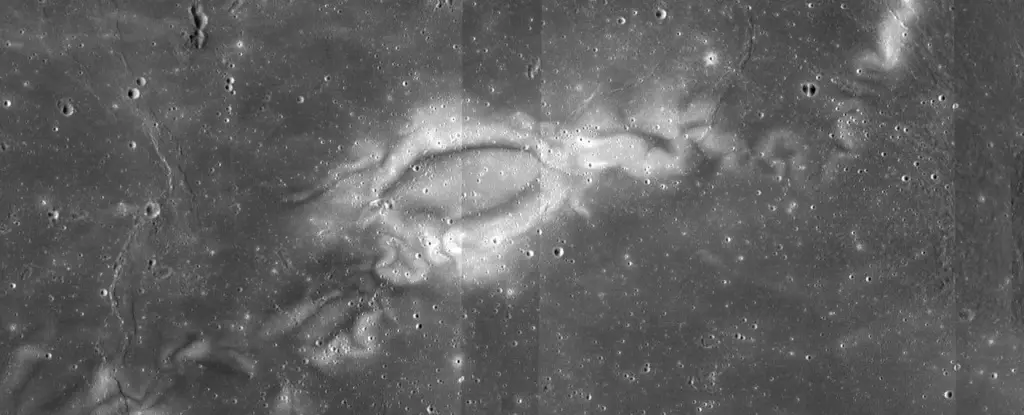The Moon, Earth’s nearest celestial neighbor, remains a constant source of fascination for scientists and space enthusiasts alike. Its surface, devoid of an atmosphere and tectonic activity, is home to impact craters and a layer of dust that holds valuable clues about the Moon’s magnetic history. Recent discoveries by a team of scientists have unveiled peculiar dust-covered boulders in the area known as the Reiner Gamma lunar swirl, shedding light on the enigmatic world of lunar anomalies.
The Reiner Gamma lunar swirl is a flat patch on the Moon’s surface that defies conventional explanation. Unlike most areas on the lunar plain called Oceanus Procellarum, it neither casts a shadow nor merges with darkness. These lunar swirls are believed to be associated with, or possibly produced by, pockets of magnetized rock that deflect solar wind particles. The magnetic material shields the surrounding regions from darkening through chemical reactions, creating swirls that are visible from Earth. However, alternative theories posit that these swirls may have formed due to the interaction between magnetic anomalies in the lunar crust and electrically charged fine dust particles propelled by micrometeorite impacts. Another possibility is that both the swirls and magnetic fields originated from plumes of material ejected by comet impacts.
To gain a deeper understanding of these complex interactions, Ottaviano Rüsch, a planetary scientist at the University of Münster in Germany, and his team analyzed approximately one million images of fractured rocks captured by NASA’s Lunar Reconnaissance Orbiter. Their search focused on the Reiner Gamma swirl and the adjacent Reiner K crater. Within this extensive database, they identified a single rock with remarkable reflective properties. Unlike other dust-covered boulders, this particular rock scattered less light back towards the sun. Inspired by this discovery, the researchers employed artificial intelligence algorithms to locate similar dusty boulders based on size and reflectance. The algorithm identified around 130,000 potential rocks, leading the team to further scrutinize 65,000 of them.
Upon closer examination, the researchers observed that the less reflective rocks were concentrated near the Reiner Gamma magnetic anomaly. However, not all rocks in the Reiner K crater displayed these peculiar reflectance properties. This discrepancy led the scientists to speculate that while the rocks might have formed from the impact of the crater, their distinct reflective behavior was more likely a result of a thin layer of dust accumulating on some, but not all, of the boulders. The exact nature of this dust, including its density, size, and structure, remains unknown.
Armed with these intriguing findings, the research team plans to delve deeper into the processes responsible for the formation of lunar swirls. Electrostatic forces that lift dust or the interaction between the solar wind and patches of magnetism on the lunar surface are potential lines of investigation. Meanwhile, NASA and researchers at the Johns Hopkins Applied Physics Laboratory have embarked on a mission to explore the Reiner Gamma magnetic anomalies on the ground. A lunar lander is scheduled for launch in 2024, with the hope of unraveling the mysteries hidden within this enigmatic region of the Moon.
The mysteries of the Moon continue to captivate humanity, with each discovery shedding new light on our celestial companion. The recent identification of reflective dust-covered boulders near the Reiner Gamma lunar swirl brings attention to the fascinating interplay between lunar magnetic anomalies and the accumulation of dust. Further research and investigations hold the promise of unlocking the secrets behind the enigmatic lunar swirls and deepening our understanding of the Moon’s magnetic history. As humanity sets its sights on future lunar exploration, these discoveries propel us closer to comprehending the intricacies of our lunar neighbor and the vast mysteries that await us.


Leave a Reply